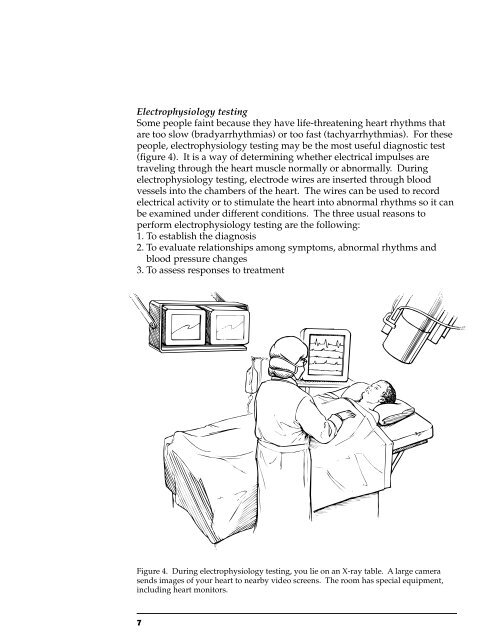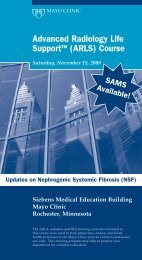Syncope - MC2945 - Mayo Clinic
Syncope - MC2945 - Mayo Clinic
Syncope - MC2945 - Mayo Clinic
Create successful ePaper yourself
Turn your PDF publications into a flip-book with our unique Google optimized e-Paper software.
Electrophysiology testing<br />
Some people faint because they have life-threatening heart rhythms that<br />
are too slow (bradyarrhythmias) or too fast (tachyarrhythmias). For these<br />
people, electrophysiology testing may be the most useful diagnostic test<br />
(figure 4). It is a way of determining whether electrical impulses are<br />
traveling through the heart muscle normally or abnormally. During<br />
electrophysiology testing, electrode wires are inserted through blood<br />
vessels into the chambers of the heart. The wires can be used to record<br />
electrical activity or to stimulate the heart into abnormal rhythms so it can<br />
be examined under different conditions. The three usual reasons to<br />
perform electrophysiology testing are the following:<br />
1. To establish the diagnosis<br />
2. To evaluate relationships among symptoms, abnormal rhythms and<br />
blood pressure changes<br />
3. To assess responses to treatment<br />
Figure 4. During electrophysiology testing, you lie on an X-ray table. A large camera<br />
sends images of your heart to nearby video screens. The room has special equipment,<br />
including heart monitors.<br />
7
















